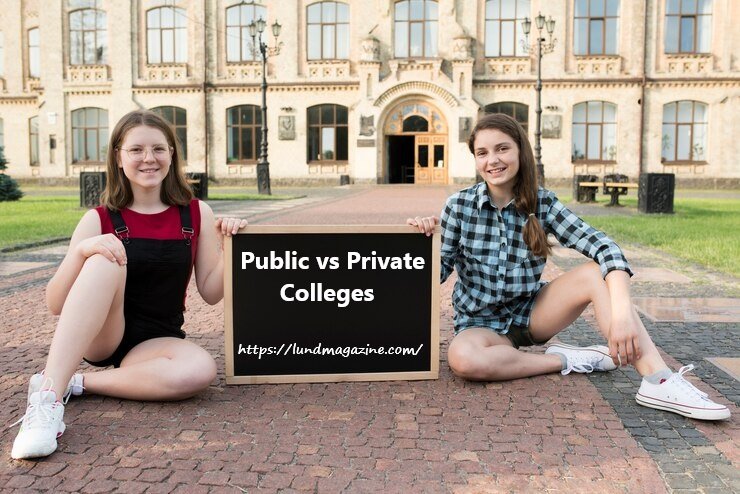Public vs Private Colleges: Which Is the Better Choice for You?

Public vs Private Colleges
Choosing the right college is a pivotal decision that can shape your future. One of the key considerations in this process is deciding between public and private colleges. Both types of institutions offer unique advantages and potential drawbacks, and understanding these differences can help you make an informed choice. In this article, we’ll explore the key aspects of public vs private colleges, including costs, academic offerings, campus life, and financial aid, to help you determine which might be the best fit for you.
1. Understanding Public vs Private Colleges
Public Colleges: Public colleges are funded and operated by state governments. They often have a larger student body and offer a wide range of programs and degrees. Examples include the University of California system, the State University of New York (SUNY) system, and the University of Texas system.
Private Colleges: Private colleges are funded through tuition, donations, and endowments, and are not operated by government entities. They tend to have smaller student populations and may offer a more personalized education. Examples include Harvard University, Stanford University, and the University of Notre Dame.
2. Cost and Financial Aid
Public Colleges:
- Tuition: Public colleges generally offer lower tuition rates for in-state students due to state subsidies. Out-of-state students may face higher tuition fees, though they are often still less expensive than private colleges.
- Financial Aid: Public colleges often have substantial state-funded financial aid programs and scholarships. Additionally, they participate in federal financial aid programs, which can help offset costs.
Private Colleges:
- Tuition: Private colleges usually have higher tuition rates, which can be significant. However, they may offer substantial financial aid packages and scholarships based on need and merit.
- Financial Aid: Private colleges often have larger endowments and can offer more generous financial aid packages. They may provide substantial institutional grants and work-study opportunities to help manage the costs.
3. Academic Programs and Quality
Public Colleges:
- Program Variety: Public colleges typically offer a wide range of programs and degrees across various fields. They often have strong programs in fields that align with state industry needs, such as engineering or agriculture.
- Research Opportunities: Public colleges often have significant research facilities and opportunities, especially in large research universities.
Private Colleges:
- Specialization: Private colleges might offer specialized programs and a more focused curriculum. They often emphasize liberal arts education, but many also have strong programs in specific fields.
- Class Sizes: Private colleges may offer smaller class sizes and more personalized attention from faculty. This can lead to more direct interaction and mentorship.
4. Campus Life and Culture
Public Colleges:
- Campus Size: Public colleges often have larger campuses and more diverse student populations. This can result in a wide range of extracurricular activities and organizations.
- Community: Public colleges are often more integrated with the local community and can offer more opportunities for off-campus activities and internships.
Private Colleges:
- Campus Atmosphere: Private colleges typically have smaller campuses and a close-knit community. The smaller student body can foster a strong sense of belonging and personalized campus culture.
- Resources: Private colleges often emphasize a holistic educational experience, with a focus on student development and support services.
5. Class Sizes and Student-Faculty Ratio
Public Colleges:
- Class Sizes: Public colleges can have larger class sizes, especially in introductory courses. This can affect the level of individual attention students receive.
- Student-Faculty Ratio: Public colleges may have a higher student-faculty ratio, which can impact the accessibility of professors and personalized support.
Private Colleges:
- Class Sizes: Private colleges often have smaller class sizes, allowing for more interactive and engaging learning experiences.
- Student-Faculty Ratio: With a lower student-faculty ratio, private colleges generally offer more opportunities for individualized attention and mentoring.
6. Admissions and Selectivity
Public Colleges:
- Admissions Criteria: Public colleges may have more standardized admissions criteria and offer a range of acceptance rates depending on the program and campus.
- In-State vs. Out-of-State: In-state students often have a higher chance of acceptance and lower admission requirements compared to out-of-state applicants.
Private Colleges:
- Admissions Criteria: Private colleges often have more selective admissions processes, which can include a holistic review of applicants, considering factors beyond test scores and grades.
- Diversity: Private colleges may seek to cultivate a diverse student body and may offer more varied admissions pathways, such as interviews and essays.
7. Job Prospects and Alumni Networks
Public Colleges:
- Alumni Networks: Public colleges often have extensive alumni networks due to their large size and long history. These networks can provide valuable connections and job opportunities.
- Career Services: Many public colleges have robust career services and internship programs, particularly in fields relevant to state industries.
Private Colleges:
- Alumni Networks: Private colleges often have tight-knit alumni networks that can provide strong professional connections and support.
- Career Services: Private colleges may offer more personalized career services and job placement assistance due to their smaller size and focus on student success.
8. Global Perspective and Diversity
Public Colleges:
- Diversity: Public colleges generally have diverse student populations and offer a range of international programs and study-abroad opportunities.
- Global Reach: Many public colleges have partnerships with institutions around the world, enhancing global perspectives for students.
Private Colleges:
- Diversity: Private colleges may also have diverse student bodies, but they often have smaller international student populations compared to large public institutions.
- Global Perspective: Private colleges often emphasize global awareness and may offer unique study abroad programs and international experiences.
Conclusion
Choosing between public and private colleges depends on your personal preferences, financial situation, and educational goals. Public vs Private Colleges offer affordability, a wide range of programs, and extensive resources, but may have larger class sizes and less personalized attention. Private colleges provide a more intimate campus environment, personalized education, and potentially generous financial aid, though they come with higher tuition costs.
When making your decision, consider factors such as cost, program offerings, campus life, and the type of educational experience you want. Research each institution thoroughly, visit campuses if possible, and talk to current students and alumni to gain insights. Ultimately, the best choice is the one that aligns with your academic, personal, and financial needs, setting you on a path to success in your higher education journey.
FAQs Public vs Private Colleges
1. What are the main differences between public vs private colleges?
Public colleges are funded and operated by state governments, typically offering lower tuition rates for in-state students. They tend to have larger student bodies and a wide range of programs. Private colleges are funded through tuition, donations, and endowments, and generally have higher tuition rates. They often offer smaller class sizes and a more personalized educational experience.
2. How do tuition costs compare between public and private colleges?
Public colleges usually have lower tuition rates for in-state students due to state subsidies. Out-of-state students may face higher tuition fees, but these are often still less than the cost of private colleges. Private colleges generally have higher tuition rates, but they may offer substantial financial aid packages that can help offset these costs.
3. What types of financial aid are available at public and private colleges?
Both public and private colleges offer financial aid, but the sources and types can vary. Public colleges often have state-funded scholarships and financial aid programs, in addition to federal aid. Private colleges typically offer more institutional grants and scholarships, often based on merit or need, and may have more substantial financial aid packages due to their endowments.
4. Are class sizes generally larger at public or private colleges?
Public colleges often have larger class sizes, especially in introductory courses, due to their larger student populations. In contrast, private colleges typically have smaller class sizes, which can lead to more personalized instruction and interaction with professors.
5. How do the academic programs at public and private colleges differ?
Public colleges generally offer a wide range of academic programs and degrees, with strong programs in areas that align with state industry needs. Private colleges may have specialized programs and a focus on liberal arts education, often with a strong emphasis on personalized learning and interdisciplinary studies.
6. What are the benefits of attending a private college?
Private colleges often provide a more intimate campus environment with smaller class sizes, personalized attention from faculty, and a strong sense of community. They may also offer specialized programs and resources tailored to student needs and potentially more generous financial aid packages.
7. How do public colleges support career services and job placement?
Public colleges often have extensive career services and internship programs, especially in fields relevant to state industries. They leverage their large alumni networks to provide job placement support and career development opportunities.
8. What impact does campus size have on the student experience?
Public colleges typically have larger campuses with more diverse student populations, leading to a wide range of extracurricular activities and opportunities. Private colleges generally have smaller campuses, which can create a close-knit community and offer a more personalized college experience.
Also, Read About, Lund University: The Future of Education







